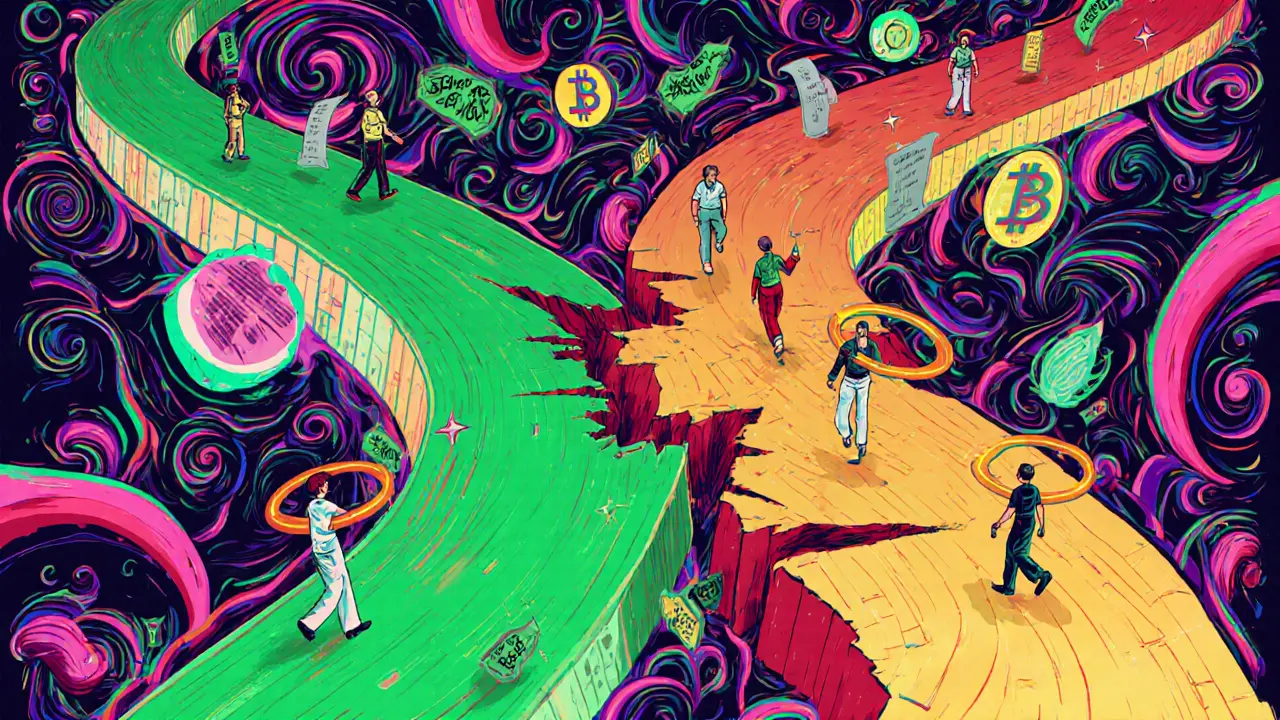Hard Fork: What It Is, Why It Matters, and How It Changes Crypto
When a hard fork, a permanent split in a blockchain that creates two separate versions of the ledger. Also known as a blockchain fork, it happens when developers or the community decide to change the core rules of a network—like how transactions are validated or how new coins are issued. Unlike a soft fork, which keeps everything backward-compatible, a hard fork breaks the old rules entirely. If you hold Bitcoin before a hard fork, you might end up with two different coins afterward—one on each chain. This isn’t just a technical tweak. It’s a political and economic event. Think of it like a country splitting into two nations: same history, but now separate laws, currencies, and identities.
Hard forks often happen because of deep disagreements. Maybe miners want bigger blocks to handle more transactions. Maybe users demand faster confirmations. Or maybe a group wants to reverse a hack, like what happened with Ethereum after The DAO attack in 2016. That split created Ethereum (ETH) and Ethereum Classic (ETC). One chain followed the new rules; the other stuck with the original. Neither was wrong—just different. The market decided which one had more value. Today, hard forks still drive major shifts. Projects like Bitcoin Cash and Litecoin were born from hard forks of Bitcoin, each trying to solve different problems: lower fees, faster blocks, or different mining algorithms.
Not every hard fork succeeds. Most die quietly. Some, like the Electric Cash (ELCASH) coin mentioned in our posts, collapse after a 99.9% price crash—no development, no community, no future. Others, like the ongoing debates around Bitcoin’s scalability, keep resurfacing. Hard forks require consensus, and consensus is messy. They can create confusion for users, wallets, and exchanges. If you’re holding crypto during a fork, you need to know if your wallet supports both chains. If you’re trading, you need to know which version people actually want to use. And if you’re building on a chain, you need to know if the fork will break your smart contracts.
Hard forks also tie into bigger trends. Regulatory pressure, like the EU’s MiCA rules or OFAC sanctions, can push developers to fork away from compliance-heavy chains. Tokenization of real-world assets, like tokenized Treasuries or gold, sometimes needs a new blockchain—built from a fork—to meet legal or technical demands. Even airdrops, like the MetaSoccer NFT drop or the failed HaloDAO RNBW token, often ride on the back of a forked chain. You can’t understand crypto’s evolution without understanding forks.
Below, you’ll find deep dives into how hard forks affect real users, how to spot fake forks disguised as airdrops, and why some chains survive while others vanish. Whether you’re holding crypto, trading, or just trying to stay safe, knowing how and why forks happen isn’t optional—it’s essential.
What Happens During a Blockchain Fork: Soft, Hard, and How Communities Split
A blockchain fork splits the network into two versions when protocol rules change. Hard forks create new coins; soft forks upgrade without splitting. Success depends on community consensus, not just code.
